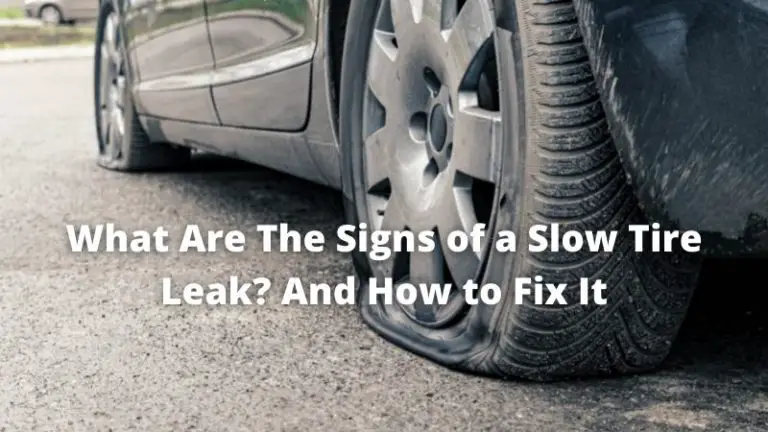A flat tire is never a welcome sight, especially when you’re in a hurry. But what if the leak is a slow one? While it might not seem like an immediate emergency, a slow leak can quickly lead to a flat tire, stranding you at the most inconvenient time. Fortunately, fixing a slow leak is a relatively straightforward process that you can handle with some basic tools and a little know-how.

Image: whirlingwheelz.com
Get to the Root of the Problem: Identifying the Source of the Leak
Before you jump into the repair process, it’s crucial to determine where the leak is coming from. Grab some soapy water and liberally apply it to the tire’s surface, paying close attention to areas like the sidewall, tread, and valve stem. Bubbles will start to form wherever there’s a leak.
Puncture or Hole
If the bubbles are forming on the tire’s tread, you’re likely dealing with a puncture or hole caused by a nail, screw, or other sharp object. The size of the hole will determine the best course of action, but typically you can plug or patch the puncture yourself using a tire repair kit.
Valve Stem
If the bubbles form around the valve stem, it’s a sign that the valve core is damaged or the valve stem is loose. In this case, you’ll need to replace the valve stem entirely, and it’s recommended to have it done by a tire professional or mechanic.

Image: www.engineeringchoice.com
Sidewall
A leak on the tire’s sidewall can be a bit more tricky. Sidewall punctures or tears can compromise the integrity of the tire and should be repaired by a professional as soon as possible.
DIY Tire Leak Repair
If the leak is coming from a puncture in the tread, you can resolve it with a tire repair kit, which typically includes a reamer, insertion tool, and rubber plugs. Follow these steps carefully:
Clean the Puncture
Use the reamer or a sharp tool to clean the edges of the puncture, removing dirt and debris that may prevent the plug from sealing properly.
Apply the Rubber Plug
Dip the end of the plug into rubber cement and insert it into the cleaned puncture using the insertion tool. Make sure the plug is seated flush with the tire’s surface.
Cut Off Excess Plug
Once the plug is securely in place, use a sharp knife to trim off any excess material that extends beyond the tire’s surface.
FAQ on Tire Leaks
- Q: Can I drive with a slow leak?
A: No, it’s not recommended to drive with a slow leak as it can lead to a sudden flat tire, which can be dangerous. - Q: How often should I check my tire pressure?
A: Check tire pressure once a month to ensure it’s at the recommended level for your vehicle. - Q: Can I repair a sidewall leak myself?
A: No, sidewall leaks should be repaired by a professional as they compromise the structural integrity of the tire.
How To Fix A Slow Leak In A Car Tire
Conclusion
Fixing a slow leak in a car tire is a manageable task that you can tackle with the right tools and a bit of know-how. By following the steps outlined in this guide, you can safely address the leak, saving yourself time, money, and hassles down the road. Remember, regular tire maintenance is crucial for ensuring safe and optimal vehicle performance.